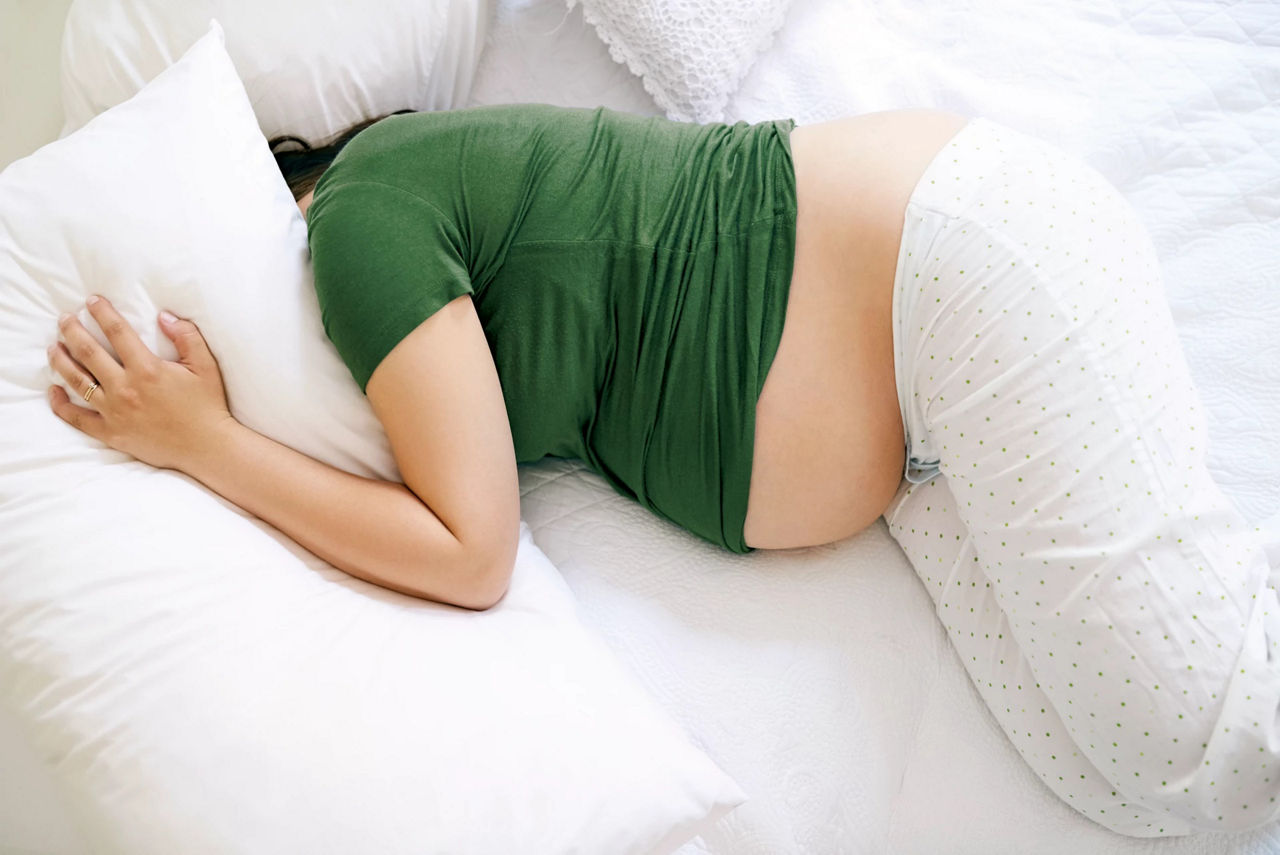Free weaning plan - Register here
Stages of Labour
The three stages of labour explained
Labour is the physical process you go through when giving birth to your little one. During labour your uterus contracts and your cervix opens, which allows your baby to come out into the world for the first time. Although each woman’s experience of labour is different, and no one can predict how long it will last, there are three stages of labour, and there are plenty of things you can do to prepare yourself.
The first stage of labour consists of the early, active and transitional phases. It might sound a little complicated at first but let us explain. During these different stages contractions make your cervix gradually open up (dilate) to a full 10 centimetres. The second stage of labour is the pushing stage, when you are fully dilated and you’re ready to give birth to your baby; and the third and final stage is when you deliver your placenta.
First stage of labour
Possible signs of labour
During the early stages of labour, you may experience the following:
- Feeling sick or nauseous
- Tightening of the tummy
- An urge to go to the loo - this is because your little one’s head is pressing on your bowel and/or bladder.
- Lower tummy or back pain – like period pain
- Contractions
- A “show” when the mucus plug comes out of the vagina
- Your waters breaking
For many women, the earliest sign of labour is a cramping feeling - a bit like period pains. You may also have a bit of pain in your lower tummy or back. It’s also very common to experience diarrhoea or to feel sick or nauseous. If you are in any doubt about whether or not you think you are going into labour, call your midwife or maternity unit. Don’t worry, they are there to help and would rather you and your little one was safe and happy.
During these early stages of labour, you may not feel like eating very much, so it’s a good idea to have a snack or a light meal like soup, cereal or toast. Remember to drink plenty of water - you’re going to need plenty of energy.
The feelings of discomfort may not seem like anything unusual at first, but if you are in labour they will gradually develop into more regular and intense pains, otherwise known as contractions.
Getting your show
A plug of mucus has been sealing your cervix while you’ve been carrying your little one. Although this doesn’t sound particularly nice, the mucus plug is your body’s natural way of protecting your uterus and your baby from any unwanted bacteria that could enter your body (which could happen during sex or during your regular pregnancy examinations).
When the mucus plug comes away it is known as ‘a show’ or ‘showing’ and means your cervix is starting to change and open. This means your body is getting ready to welcome your little one to the world. Sometimes women experience a show a few days or even a couple of weeks before labour begins and it’s a sign of things beginning to happen.
Not all women get a show in the early stages, so don’t worry if you don’t have one. Your plug will come out naturally at some stage during your labour.
Waters breaking
During your pregnancy your baby has been growing and developing in a bag of fluid called the amniotic sac, which surrounds and protects your baby. This is commonly known as your 'waters'. When you are in labour, your waters will ‘go’ or ‘break’, but the timing of this will vary for everyone. For some women, their waters might break early, but for others it may not be until you’re in active labour. Some describe the release of fluid as a trickle, others as a gush. Some babies are also born in the sac.
If your waters break in the early stages of labour the risk of infection is increased, so it’s very important to keep your vaginal area very clean. Don’t use tampons, have sex or any hot baths.
If your waters have broken at home, you should contact your healthcare professional straight away, regardless of whether or not you are having contractions.
If you’re a little unsure about whether or not your waters have broken, amniotic fluid is clear and a pale straw colour. It’s normal for the water to be a little bloodstained to begin with, but you should call triage or the maternity unit straight away if you suspect your waters have broken. Vaginal discharge can increase greatly towards the end of your pregnancy, and it can therefore be really hard to tell the difference between discharge and waters. If in doubt put a pad in place and call your healthcare professional.
Contractions
As you near the end of your pregnancy, you’ll begin to question every little tummy twinge, bowel movement or Braxton Hicks. And you’ll probably ask yourself repeatedly, is it finally time to meet my little one? This is particularly true if it’s your first baby, but don’t worry, it’s perfectly natural to question every little movement.
So what is a contraction and what do they feel like? Contractions are a tightening and relaxing of the muscles in your uterus, which you may feel in the front or back, and they’ll feel stronger than the irregular Braxton Hicks you may have experienced during pregnancy.
If you’re in labour, you’ll start to experience contractions at increasingly shorter intervals, and they’ll become longer and stronger in intensity.
Contractions are not continuous and can be irregular. This is to allow you, your baby and your uterus to have a little rest after each one.
How to time your contractions
To help monitor the progress of your labour it’s important to start timing your contractions once they get going. One of the main reasons for this is that when you call your triage or maternity unit to tell them you’re in labour, one of the first things they will ask is how often you are contracting. To time your contractions, try and count the seconds between each one. There are apps for keeping track of contractions and you can also use your phone to time them (as well as a clock or stopwatch). This will ensure you're monitoring them correctly. It is often easier to note down the time each contraction started and how long it lasts for. You can then count the time between each one. This also helps to show if they are regular.
A typical pattern for your early phase contractions is for them to begin by lasting about 40 seconds and come every 10 minutes. By the time you’re ready to give birth, the contractions will last about a minute and come every 2 minutes. These timings are just a guide - they will vary from person to person.
Making the first stage more comfortable
For advice about how to have a more comfortable labour, read our tips for getting through labour; or, if you want to know how to keep your energy levels up, read our article on food & drink during labour.
What is slow labour?
Everyone is different and not all labours stick to a timetable! A slow labour is quite common and nothing to worry about. Your midwife will be there to guide you at every stage.
Second stage of labour
The second stage of labour begins when your cervix is 10 cm dilated and ends with the birth of your baby! You’ve waited so long, but now you’re nearly there!
If this is your first baby, the second stage may still take an hour or even longer to complete. But if you’ve had one or more babies already, it may take as little as five minutes.
Pushing your baby out
Your body will tell you when to push – in fact, the urge will probably be overwhelming and pretty difficult to resist!
Once your baby’s head is visible, your healthcare professional may encourage you to try and slow the process down by asking you to stop pushing and pant instead. It’s a delicate stage and this is important, as it may help reduce the risk of tearing. You’ll gently push your baby out on the next contraction.
At last your baby will be born. You'll probably be encouraged to have skin-to-skin contact (if you choose to) at this point and you can finally say hello to your baby.
Third stage of labour
Delivering the placenta
Your midwife will offer you an injection to help with the delivery of the placenta. If you choose to have the injection, delivery will probably happen within 30 minutes. But if you decide to deliver naturally, it may take up to an hour.
You’ll find that the contractions will start again, enabling you to gently push your placenta down and out of your vagina.
Once it’s delivered, your healthcare professional will feel your tummy to check that your uterus has started to contract now the placenta has gone. The placenta will then be checked thoroughly to make sure that it is complete.

Join the C&G baby club today
- Weekly emails with tips and advice for your stage
- 1-to-1 support from our dedicated Careline team, 8.30am - 5.30pm Monday to Friday.

Join the C&G baby club today
- Weekly emails with tips and advice for your stage
- 1-to-1 support from our dedicated Careline team, 8.30am - 5.30pm Monday to Friday.
More from pregnancy
Pregnancy topics
Any more questions?
Our specialist baby advisors and experienced mums are here to talk and ready to help whenever you need them. You can call us or reach us on Live Chat 8.30am-5.30pm Monday-Friday.
Phone
Call 1800 570 570
FAQs
For all the latest information
Email Us
Send us an email
8.30 am - 5.30pm Monday-Friday





